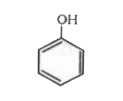Which of the following can act both as a Bronsted acid and a Bronsted base?
(a) OΘ2
(b) HCl
(c) HSOΘ4
(d) Na2CO3
The correct Answer is:C
To determine which of the given substances can act both as a Bronsted acid and a Bronsted base, we need to understand the definitions of Bronsted acids and bases:
1. Bronsted Acid: A substance that can donate a proton (H⁺ ion).
2. Bronsted Base: A substance that can accept a proton (H⁺ ion).
Now, let's analyze the options provided:
Step 1: Identify the substances
Assuming the options are:
- A) HCl
- B) HSO4⁻
- C) H2O
- D) NH3
Step 2: Analyze each substance
- HCl:
- As a Bronsted acid: HCl can donate H⁺ to form Cl⁻.
- As a Bronsted base: HCl cannot accept H⁺ ions.
- Conclusion: HCl can only act as a Bronsted acid.
- HSO4⁻:
- As a Bronsted acid: HSO4⁻ can donate H⁺ to form SO4²⁻.
- As a Bronsted base: HSO4⁻ can accept H⁺ to form H2SO4.
- Conclusion: HSO4⁻ can act as both a Bronsted acid and a Bronsted base.
- H2O:
- As a Bronsted acid: H2O can donate H⁺ to form OH⁻.
- As a Bronsted base: H2O can accept H⁺ to form H3O⁺.
- Conclusion: H2O can act as both a Bronsted acid and a Bronsted base.
- NH3:
- As a Bronsted acid: NH3 cannot donate H⁺ ions.
- As a Bronsted base: NH3 can accept H⁺ to form NH4⁺.
- Conclusion: NH3 can only act as a Bronsted base.
Step 3: Conclusion
From the analysis, we find that both HSO4⁻ and H2O can act as both Bronsted acids and Bronsted bases. However, if we are to choose one based on the options provided, HSO4⁻ is the most commonly recognized example of a substance that can act as both.
Final Answer
The correct answer is HSO4⁻.
2. Bronsted Base: A substance that can accept a proton (H⁺ ion).
Assuming the options are:
- A) HCl
- B) HSO4⁻
- C) H2O
- D) NH3
- HCl:
- As a Bronsted acid: HCl can donate H⁺ to form Cl⁻.
- As a Bronsted base: HCl cannot accept H⁺ ions.
- Conclusion: HCl can only act as a Bronsted acid.
- As a Bronsted acid: HSO4⁻ can donate H⁺ to form SO4²⁻.
- As a Bronsted base: HSO4⁻ can accept H⁺ to form H2SO4.
- Conclusion: HSO4⁻ can act as both a Bronsted acid and a Bronsted base.
- As a Bronsted acid: H2O can donate H⁺ to form OH⁻.
- As a Bronsted base: H2O can accept H⁺ to form H3O⁺.
- Conclusion: H2O can act as both a Bronsted acid and a Bronsted base.
- As a Bronsted acid: NH3 cannot donate H⁺ ions.
- As a Bronsted base: NH3 can accept H⁺ to form NH4⁺.
- Conclusion: NH3 can only act as a Bronsted base.
From the analysis, we find that both HSO4⁻ and H2O can act as both Bronsted acids and Bronsted bases. However, if we are to choose one based on the options provided, HSO4⁻ is the most commonly recognized example of a substance that can act as both.
The correct answer is HSO4⁻.
Topper's Solved these Questions
- IONIC EQUILIBRIUMBOOK - CENGAGE CHEMISTRY ENGLISHCHAPTER - IONIC EQUILIBRIUMEXERCISE - Exercises Assertion-Reasoning
36 Videos
- IONIC EQUILIBRIUMBOOK - CENGAGE CHEMISTRY ENGLISHCHAPTER - IONIC EQUILIBRIUMEXERCISE - Exercises Integer
10 Videos
- IONIC EQUILIBRIUMBOOK - CENGAGE CHEMISTRY ENGLISHCHAPTER - IONIC EQUILIBRIUMEXERCISE - Exercises Multiple Correct
33 Videos
- HYDROGEN, WATER AND HYDROGEN PEROXIDEBOOK - CENGAGE CHEMISTRY ENGLISHCHAPTER - HYDROGEN, WATER AND HYDROGEN PEROXIDEEXERCISE - Subjective Archive (Subjective)
3 Videos
- ISOMERISMBOOK - CENGAGE CHEMISTRY ENGLISHCHAPTER - ISOMERISMEXERCISE - Assertion-Reasoning Type
1 Videos
Similar Questions
Knowledge Check
Which of the following is the strongest Bronsted acid ?
A B
B C
C D
D
Which of the following is the strongest Bronsted acid ?
A B
B C
C D
D
Which of the following is the weakest Bronsted base?
A B
B C
C D
D
Which one of the following species acts as both Bronsted acid and base ?
View SolutionWhich of the following can act as a Bronsted acid but not as a Lewis acid?
View SolutionWhich of the following can act as Lowry-Bronsted acid as well as base?
View SolutionWhich of the following is the weakest Bronsted base?
View SolutionWhich of the following is the weakest Bronsted base?
View Solution
